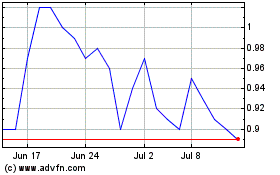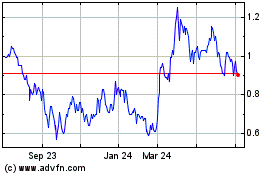By Alistair MacDonald and Ben Dummett
The vast majority of the world's gold miners have yet to join
the wave of mergers reshaping the top of their sector, even as
investors say more tie-ups are necessary amid poor returns and
depreciating gold reserves.
Since the bursting of the commodity bubble in 2011, bankers and
investors have predicted the thousands of small and midsize gold
miners that populate this sector would merge.
This week, the sector's largest companies, Barrick Gold Corp and
Newmont Mining Corp said they would form a Nevada joint venture
that, if a separate company, would be the third-biggest producer of
gold in the world. Last fall, Barrick also bought Randgold
Resources and in January Newmont bought Goldcorp Inc.
But the rest of the sector has yet to join in. The industry
feels burned by past mergers and acquisitions where purchasers
overpaid for assets. Many companies are unwilling to sell with
share prices so low and, according to investors, because entrenched
management doesn't want to put its well-paying jobs and lofty
positions at risk.
"Capital has become more difficult for companies to access and
important to that access is scale and liquidity, and some of those
companies don't have the size to attract that attention," said
Douglas B. Groh, a fund manager at Tocqueville Asset
Management.
Last year, there were 637 mining deals worth $59.6 billion, down
55% from the 2011 peak, according to data provider Dealogic. Over
the same period, there were 784 oil and gas deals worth $340
billion, the highest value in the last decade.
Some managers have struggled to sell. Africa-focused Roxgold
Inc. has been trying to sell itself for some time and is currently
involved in discussions with at least one party, according to
people familiar with the matter.
Kinross Gold Corp. has been trying to sell its 90%-owned Chirano
mine in Ghana for more than a year without reaching an agreement,
given what some potential buyers see as a high price, according to
a person familiar with the matter.
Roxgold and Kinross declined to comment.
Miners and bankers give a variety of reasons for why the gold
mining merger wave hasn't come. The poor performance of gold
miners' shares means that sellers want to hold out for better
valuations and buyers are reluctant to use shares they believe are
undervalued for acquisitions.
The S&P TSX Global Gold Index is down 51% since its 2011.
The S&P 500 has doubled in value in that time.
The industry as whole has a poor record in M&A. Miners
overspent during the decadelong bubble that ended in 2011. That put
off investors and made some executives wary of doing deals.
In 2016, PwC calculated that big miners had written off $200
billion of the value in acquisitions and projects over the previous
five years.
Executives may be reluctant for another reason, investors say.
They don't want to put themselves out of a well-paid job by merging
or selling their mines.
In Canada, for instance, chief executives and presidents of
mining companies they surveyed received a basic salary of C$200,000
and C$400,000 ($149,400 and $298,800) in 2017, according to
recruitment consultants Hays. That was the highest wage among the
various sectors in Canada that Hays surveyed. Those high wages came
despite poor returns from the sector.
Between 2010 and 2016, Yamana Gold Inc. paid its CEO over $60
million, according to research by Paulson & Co, despite its
share price falling by almost 70% in the period.
"There are probably too many gold companies around with poor
managers, so get these gold miners in stronger management hands,"
said Joe Foster, who runs the VanEck International Investors Gold
Fund.
Investors' lack of interest is a factor pushing for
consolidation, with miners needing to bulk up to get attention. For
smaller miners, the ascendance of index funds has made it harder to
attract money, because they aren't in the markets that these
investment vehicles track.
In Canada alone, there were 1,184 miners listed on the Toronto
Stock Exchange and TSX Venture Exchange as of this January, with a
combined market cap of just C$271 billion.
Miners are also chasing a depreciating resource. The World Gold
Council estimated that the industry produced 3,244 tons of gold in
2018, with production peaking at 3,252 tons in 2016.
Even as these mines deplete, there have been very few new
discoveries to replace the lost production, the bank says.
Still, bankers and executives say companies are currently
talking and they say the much anticipated consolidation will
happen.
There were two smaller deals this week, including Newcrest, the
world's third-biggest listed gold company by market value, inking a
$806.5 million deal to buy a majority stake in a Canadian mine.
Tom Palmer, the chief operating officer of Newmont, said smaller
players are waiting to see what the bigger miners sell once they
have completed their mergers before they start their own
M&A.
"Fast forward two or three years, there will be countless more"
mergers, he said.
Write to Alistair MacDonald at alistair.macdonald@wsj.com and
Ben Dummett at ben.dummett@wsj.com
(END) Dow Jones Newswires
March 13, 2019 08:06 ET (12:06 GMT)
Copyright (c) 2019 Dow Jones & Company, Inc.
Augusta Gold (TSX:G)
Historical Stock Chart
From Mar 2024 to Apr 2024

Augusta Gold (TSX:G)
Historical Stock Chart
From Apr 2023 to Apr 2024
